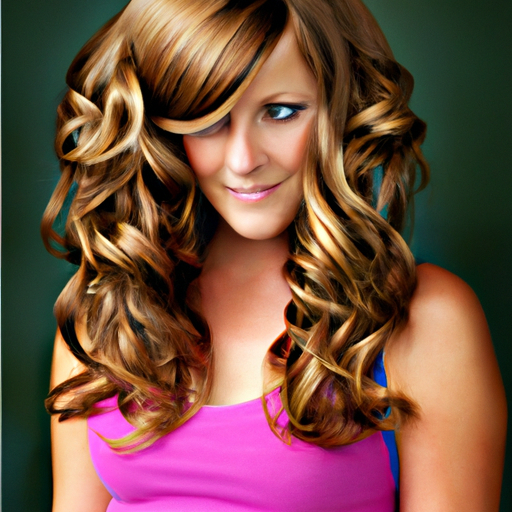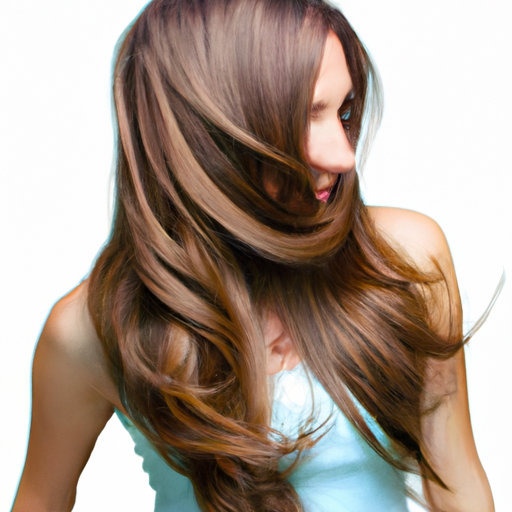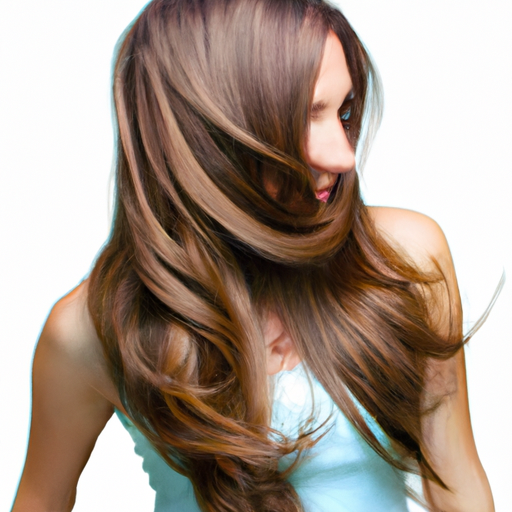Frizz can be a common issue with human hair wigs, but there are several steps you can take to minimize it and keep your wig looking sleek and smooth. In our upcoming article, we’ll explore some effective techniques to reduce frizz in a human hair wig, so you can confidently wear your wig without worrying about flyaways and unruly strands.
One important factor in preventing frizz is proper wig care. Regular washing and conditioning are essential to keep the hair hydrated and nourished, which can help reduce frizz. We’ll discuss the best shampoos and conditioners to use for human hair wigs, as well as the proper washing technique to ensure your wig remains silky and manageable.
Additionally, we’ll delve into the importance of using the right styling products for your wig. Certain hair products, such as serums and leave-in conditioners, can help control frizz and add shine to the hair. We’ll explore some recommended products and provide tips on how to apply them for optimal results.
Furthermore, we’ll discuss the significance of proper storage and handling of your human hair wig. Storing your wig correctly can prevent tangling and minimize frizz caused by friction and environmental factors. We’ll cover the best practices for storing and handling your wig to maintain its smooth texture and reduce frizz.
By following these tips and techniques, you’ll be able to minimize frizz and keep your human hair wig looking fabulous. Be sure to check out our article for more in-depth information and step-by-step instructions on how to reduce frizz in your human hair wig. Frizz is a common issue that many wig wearers face, regardless of whether the wig is made from human hair or synthetic fibers. However, the good news is that there are several effective ways to reduce frizz and keep your human hair wig looking smooth and beautiful. In this article, we will explore the causes of frizz in human hair wigs, as well as provide you with practical tips on preventing and managing frizz. So let’s get started!

Causes of Frizz in Human Hair Wigs
Humidity
Humidity is a major contributor to frizz in human hair wigs. When the air is humid, the excess moisture in the atmosphere can penetrate the wig strands, causing them to swell, become unruly, and ultimately frizz. This is especially true for wigs made from natural hair, as they have a tendency to absorb moisture from the environment more easily than synthetic wigs.
Dryness
On the flip side, dryness can also lead to frizz in human hair wigs. Just like your natural hair, human hair wigs need proper hydration to maintain their smoothness and prevent frizz. When the wig strands become dry, they become more prone to static electricity, which can create frizz and flyaways.
Friction
Friction is another common cause of frizz in human hair wigs. When the wig constantly rubs against clothing, pillows, or other surfaces, the friction can disrupt the hair cuticles and create frizz. This is especially true if the wig is not properly secured, causing it to move around excessively.
Chemical Damage
Chemical damage, such as from excessive use of styling products or harsh hair treatments, can severely damage the hair cuticles and strip the wig of its natural oils. This can lead to dryness, brittleness, and ultimately frizz. It’s important to use gentle, sulfate-free products that are specifically formulated for human hair wigs to minimize the risk of chemical damage.
Preventing Frizz in Human Hair Wigs
Proper Washing and Conditioning
One of the best ways to prevent frizz in a human hair wig is to maintain a regular washing and conditioning routine. It’s crucial to use lukewarm water and a mild shampoo that is formulated for human hair wigs. Gently massage the shampoo into the wig, being careful not to rub or tangle the strands. Rinse thoroughly and follow up with a high-quality conditioner to restore moisture and smoothness to the hair.
Avoiding Heat Damage
Excessive heat styling can damage the cuticles of human hair wigs and lead to frizz. To minimize heat damage, avoid using high temperatures when using styling tools such as straighteners and curling irons. Additionally, always use a heat protectant spray before applying any heat to the wig to create a protective barrier and reduce the risk of frizz.
Using Frizz-Fighting Products
There are numerous frizz-fighting products available in the market that are specifically formulated for human hair wigs. These products often contain ingredients such as silicone or argan oil, which can help reduce frizz and add shine to the hair. Apply a small amount of the product to your wig after washing and conditioning, focusing on the mid-lengths and ends, to keep the hair smooth and frizz-free.
Protective Styling
Protective styling is an excellent way to prevent frizz in human hair wigs. By putting the hair in a low-maintenance style such as braids or a bun, you can minimize friction and keep the strands from rubbing against surfaces. Additionally, protective styling helps to keep the hair moisturized, as it reduces exposure to external elements such as wind and humidity.

Managing Frizz in Human Hair Wigs
Detangling with Care
When dealing with frizz in a human hair wig, it’s important to detangle the hair with care. Use a wide-tooth comb or a specialized wig brush to gently remove any tangles and knots, starting from the ends and working your way up to the roots. Avoid pulling or yanking on the hair, as this can lead to breakage and further frizz.
Applying Leave-In Conditioner
Leave-in conditioner is a fantastic product for managing frizz in human hair wigs. After washing and conditioning your wig, apply a small amount of leave-in conditioner to the strands, focusing on the areas prone to frizz. This will help to lock in moisture, add manageability, and reduce the appearance of frizz throughout the day.
Utilizing Anti-Frizz Serums
Anti-frizz serums are highly effective in taming and smoothing frizzy hair. Look for serums that are specifically designed for human hair wigs and contain ingredients such as silicone or argan oil. Apply a small amount of the serum to the palm of your hand, rub your hands together, and then lightly smooth the product over the wig. This will help to seal the hair cuticles and create a barrier against frizz-causing factors.
Avoiding Brushing When Hair is Dry
Brushing human hair wigs when they are dry can lead to increased frizz and breakage. Instead, always brush the wig when it is damp or moist, as this will minimize friction and help maintain the hair’s smoothness. Use a wide-tooth comb or a specialized wig brush to gently detangle the strands, starting from the ends and working your way up.
Taming Frizz in Human Hair Wigs
Steam Treatment
A steam treatment can work wonders in taming frizz and revitalizing human hair wigs. This process involves exposing the wig to steam, which helps to open up the hair cuticles, allowing moisture to penetrate and restore the hair’s natural smoothness. You can either use a handheld steamer or even create a DIY steam treatment by placing the wig over a pot of hot water.
Deep Conditioning
Deep conditioning treatments are essential for maintaining the health and appearance of human hair wigs. These treatments help to restore moisture, repair damage, and nourish the hair from within, reducing frizz and improving manageability. Apply a deep conditioner to your wig, focusing on the mid-lengths and ends, and leave it on for the recommended time before rinsing thoroughly.
Silk or Satin Lining
Silk or satin linings are a game-changer when it comes to reducing frizz in human hair wigs. These materials create a smooth and friction-free surface, minimizing the rubbing and tugging that can lead to frizz. Consider wearing a wig cap or investing in a wig with a silk or satin lining to protect the wig and keep your hair looking sleek and frizz-free.
Avoiding Excessive Manipulation
Excessive manipulation of the hair can cause frizz and damage to human hair wigs. Minimize brushing, combing, and touching the hair throughout the day, as this can disrupt the hair cuticles and create frizz. Instead, style the wig once and leave it undisturbed as much as possible to maintain its smoothness.
Conclusion
In conclusion, frizz is a common issue that can affect human hair wigs, but with the right care and proper maintenance, it can be easily managed and minimized. By following the tips and techniques outlined in this article, you can reduce frizz, maintain the smoothness and shine of your human hair wig, and enjoy beautiful, lustrous hair every day.
Remember, prevention is key, so make sure to implement a regular washing and conditioning routine, avoid excessive heat styling, and use frizz-fighting products specifically designed for human hair wigs. Additionally, be mindful of how you handle and style your wig, and consider incorporating protective styles and treatments into your hair care routine.
With proper care and attention, your human hair wig can maintain its natural beauty and provide you with endless styling possibilities. So embrace your wig, experiment with different looks, and confidently rock your frizz-free hair!
